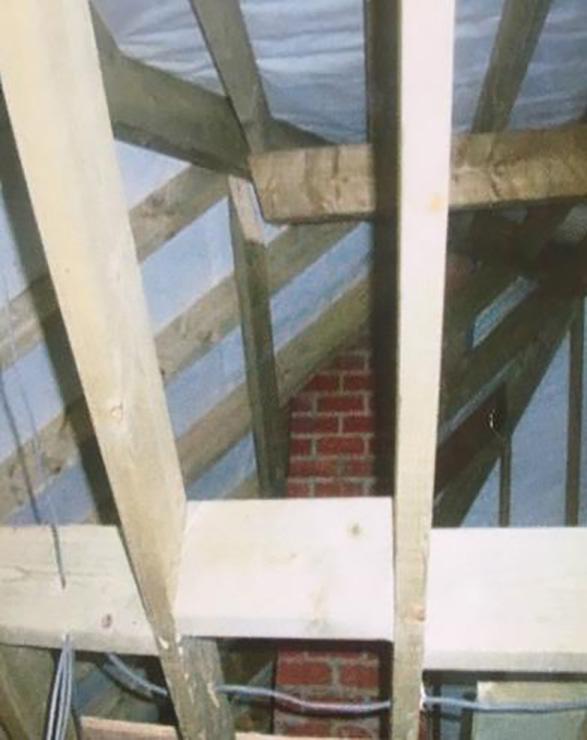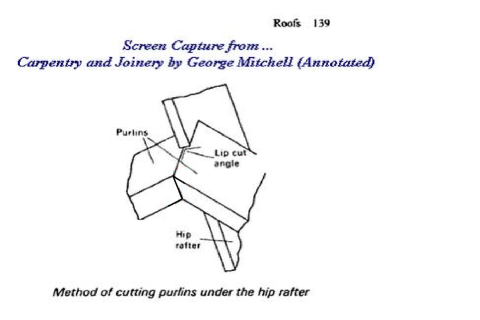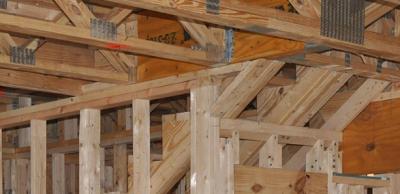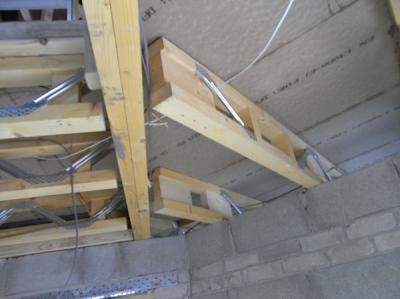How to get it right: Traditional hipped roof
Can you see what the problem is with this roof?
If you look closely, the purlins connecting to the hip rafter don’t make contact with one another and make very little contact with the hip itself.
Traditional roofs work by distributing loads from the rafters down through to the wall plate and then through to the walls below. The best way to transfer load is with a timber to timber joint. Nails, bolts and screws create a mechanical fixing to stop uplift through wind etc.
When rafter spans are too great, a purlin is introduced to break the span by transferring the loads to gable walls or in this case to the hip rafters. If the connection details between purlins and hip rafters are inadequate, it can contribute to roof defects and ultimately premature failure.
All timbers should be sized to allow a full connection with the cut depth. Furthermore, all timber connections should be cut to ensure a full contact with the supporting member. A typical cut detail between purlins and a hip rafter is shown below – this will facilitate the loads being transferred safely down the hip to the wall plate.
Remember, all roofs (including their connection details) should be designed and constructed by competent persons.
Found this article useful?
Browse the rest of our 'How to get right' articles
Please Note: Every care was taken to ensure the information was correct at the time of publication. Any written guidance provided does not replace the user’s professional judgement. It is the responsibility of the dutyholder or person carrying out the work to ensure compliance with relevant building regulations or applicable technical standards.
This article was updated on 24 November 2022
Sign up to the building bulletin newsletter
Over 48,000 construction professionals have already signed up for the LABC Building Bulletin.
Join them and receive useful tips, practical technical information and industry news by email once every 6 weeks.
Subscribe to the Building Bulletin





Comments
Add new comment